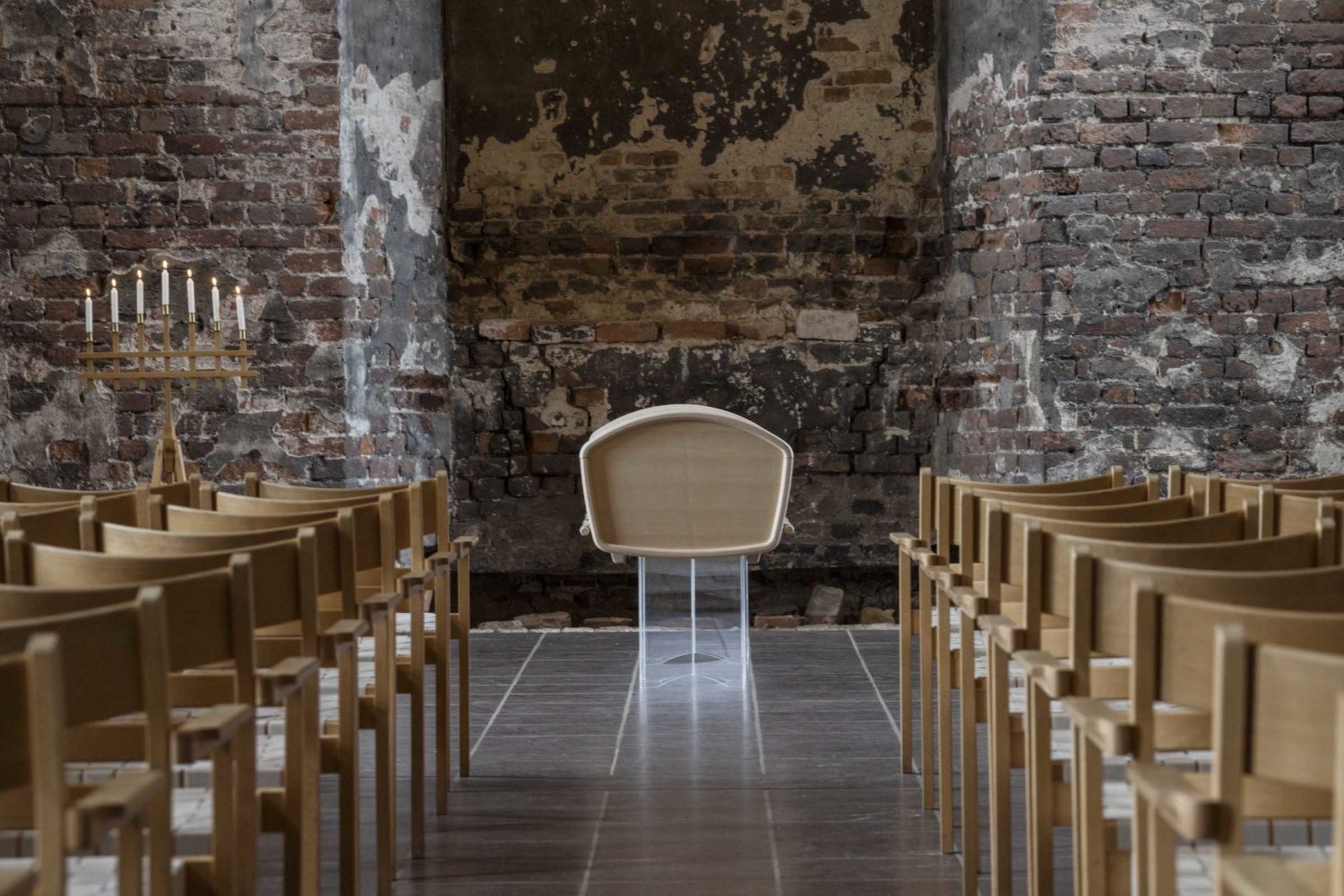A New Dignitity
A New Dignity demonstrates how the objects we use in sickness and death can be an aesthetic part of everyday life.
The exhibition is on display at Officinet from 29 September to 23 October 2022.
Live podcast and exhibition opening on 29 September at 17.00. Talk between Anker Bak, Pernille Stockmarr (curator at Designmuseum Danmark) and Kristina May Pries
Live talk: 6 October at 17.00: ‘Værdighed i alderdom og sygdom: Hvordan kan designeren hjælpe?’ (Dignity in old age and ill health: How can designers help?) Talk between Anker Bak, Anna Wilroth of Ældre Sagen (DaneAge Association) and Nanna de Wemmer of the National Association of Life&Death.
Officinet, Danish Crafts & Design Association, Bredgade 66, 1260 Copenhagen, Denmark
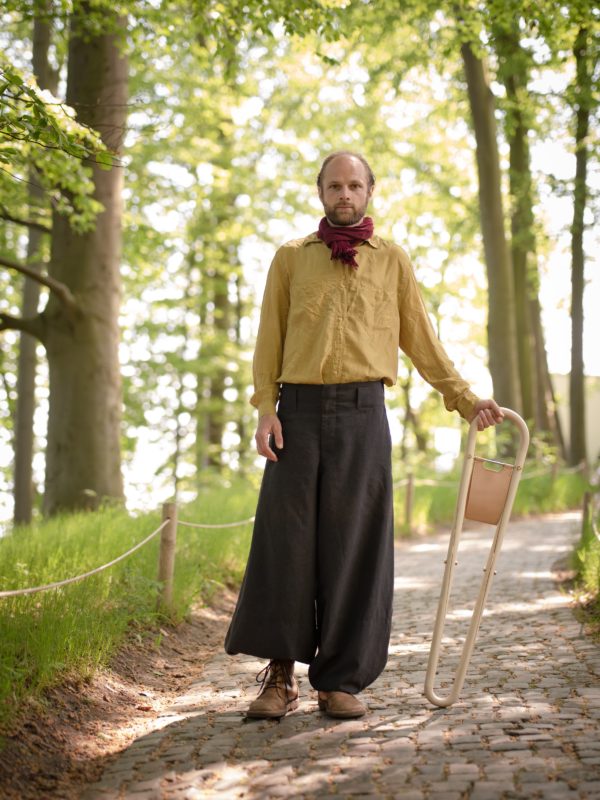
Anker Bak. Photo Bjarke Ahlstrand
Tell me about the exhibition. What are people going to see when they enter the exhibition space at Officinet?
Anker Bak (AB): I would like to begin at the beginning. My vision is that people with a general loss of function can have a normal home. That is what I have been working on for the past eight years.
In this exhibition, I want to welcome people. Using as few remedies as possible, I seek to create a homely atmosphere that is like a real-life home. I want to keep it natural and down to earth. At the opening, for example, we served white-bread buns with butter and a cold Tuborg beer.
It was important for me to make a down-to-earth presentation that doesn’t look like something out of a home interior design magazine. My goal is to give people a flavour of what’s possible. My designs are illuminated and appear in the company of classic furniture designs, including a Wegner chair and a PH lamp that I borrowed for the exhibition.
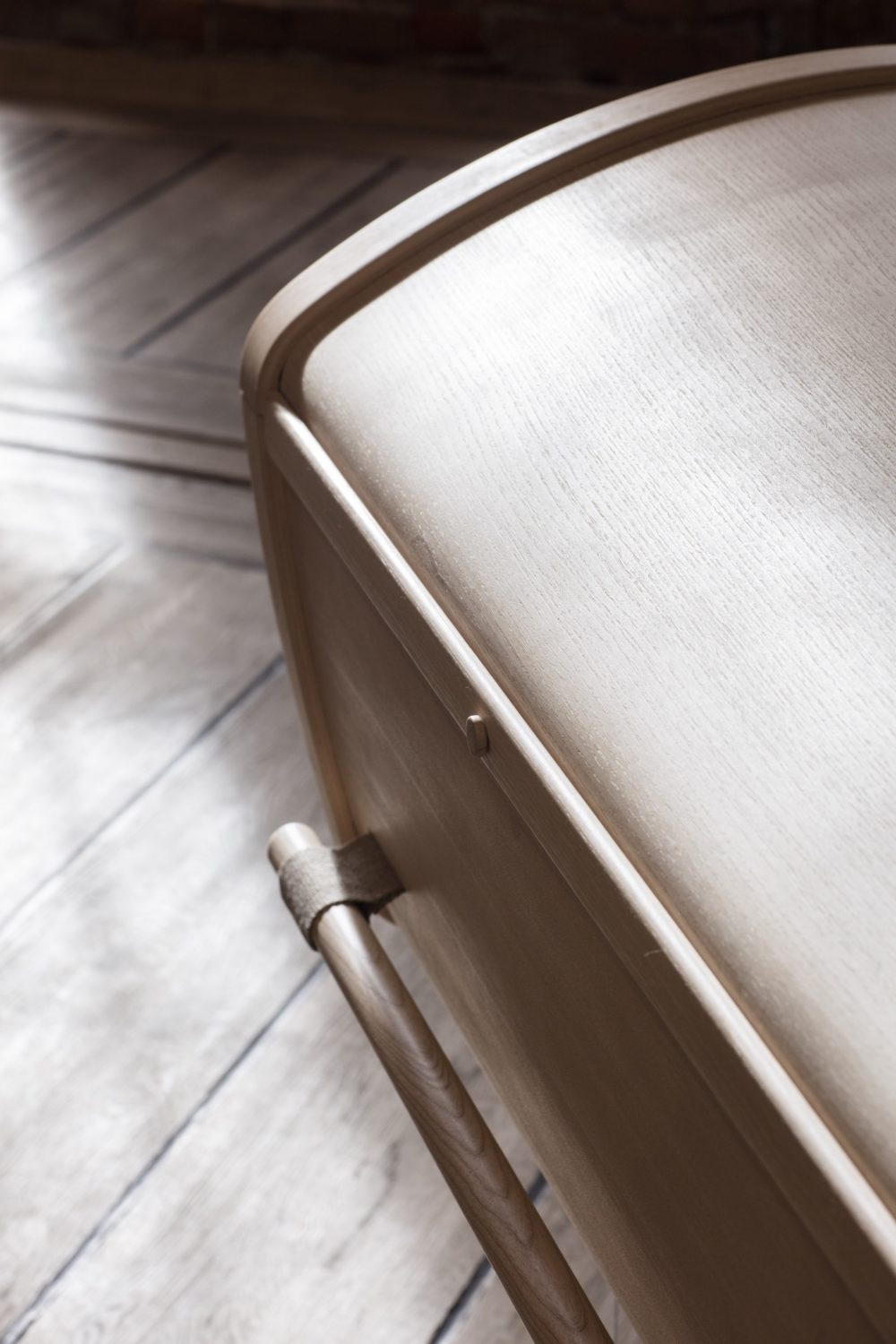
How can furniture spark conversations and challenge taboos?
AB: In the old days, the coffin was put on display in the living room, so the family could say their final goodbyes and pay respect to the person who had passed away. That funeral tradition is included in the exhibition in the form of the coffin on the dining table.
I try to normalize it (death, ed.) as much as possible. What’s important is to bring the elephant into the room. There is something at stake when we talk about it: death and old age and the infirmities that follow. That is the main essence. The exhibition has a product focus, but I would love it if people sit down and engage in a conversation. My next exhibition aims to bring the conversation into focus. That requires a different set-up, however.
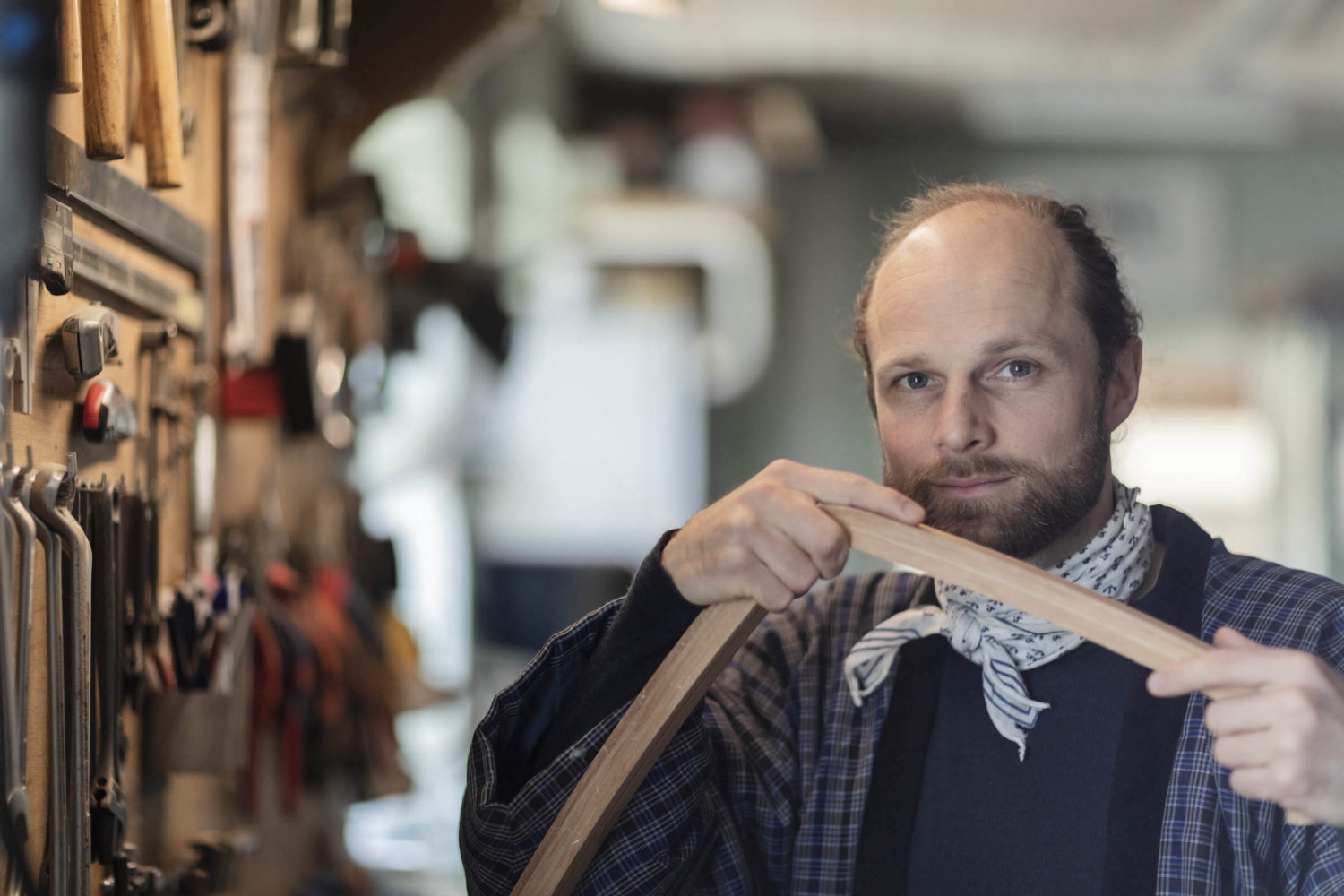
What is most important in your design process?
AB: Our furniture industry is very focused on a new form, a line, a colour. Today, only the connoisseurs can tell new furniture designs apart, to the users, they look the same.
I try to distance myself from all that. There is an agenda in society that says we have to try new things. We have to seek new paths. How can we design new products when there’s nothing we need? Instead of just looking at sustainable materials, we might look at the basis for it all. IS there even a need in the first place?
There is actually specially designed furniture for people with disabilities. It’s a big market, and currently, it is all based on plastic and aluminium. There is an opportunity here to bring aesthetics into a new area. This entire area calls for new materials and expressions.
Design provides added value. I would argue that people can have a better life, a dignified life with aesthetic assistive aids.
I am not claiming to have discovered the ultimate answer. I believe that everybody wants to help out where they can. This is my attempt at helping, doing what I do best and where I feel I can contribute. I can’t contribute to a new dining chair design. But by telling my own story, I hope I can help others see the significance of talking about death before it happens.
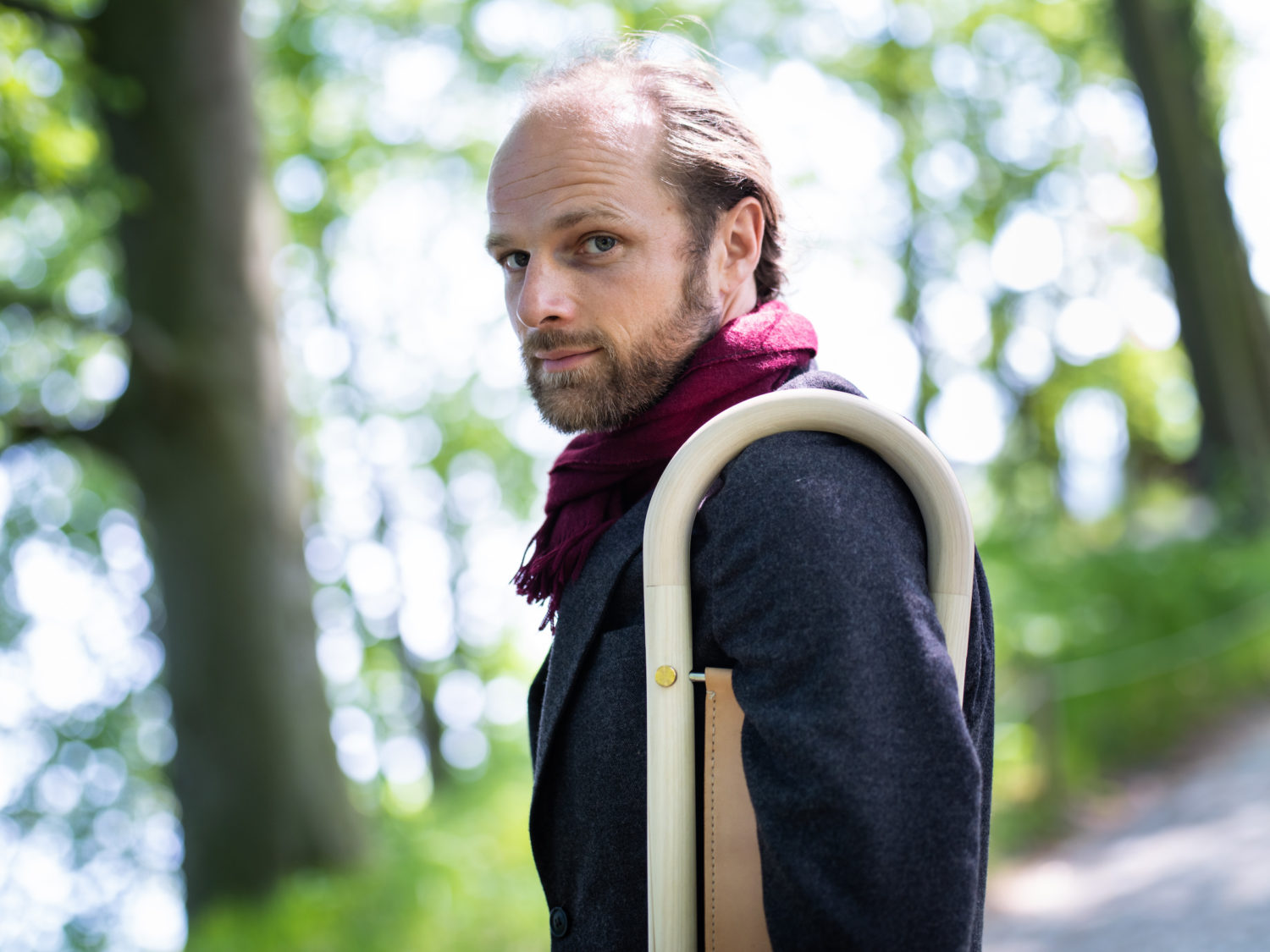
Do you see any opportunity for designers to influence assistive aids in the public sector?
AB: I am a strong supporter of the public sector, but I have invited the private sector in. I am a small-scale designer and found it difficult to have my project realized.
In a sense, I have ended up in a bit of a border zone with my furniture for people with functional impairments, since the manufacturers don’t find it sexy, and public institutions don’t understand wood.
I am working with a large Japanese manufacturer that is taking an interest in the area. However, in Denmark, I haven’t found an opening yet.
The public systems are so damned big. You drown. It takes huge financial muscle and long-term projects to get anywhere. In the long term, I would love to. If Mrs Jones wants a walker, the state could provide a subsidy, giving her a choice between the standard model and the more expensive design option. That would be an interesting partnership to discuss, but if the current emphasis on cost continues to dominate, my furniture won’t make it in.
As soon as you engage with the public system you have to talk cost. Wood will never be able to compete with aluminium when it comes to cost. That is why we need to address the topic of consumer dignity.
In relation to certain routines and cleaning requirements in public facilities, wood is not ideal. My hope is that designers working with plastic and aluminium can find some inspiration here.
To me, working with wood is a choice. Bringing nature in. The more we surround ourselves with nature, the better.
Anker Bak addressed other key issues in our talk. Nature. Manufacturers who ought to know more about the history of the product. The significance of the product’s future life in the form of user stories. Furniture that is handed down … With En ny værdighed, Anker Bak encourages designers to rethink their relevance and not just design for the market but design out of necessity and to give people more dignity.
Bio
Anker Bak (b. 1983) a trained cabinetmaker, who also apprenticed as a boat builder. His paternal grandfather was a wood carver and inspired Anker, who is dyslexic, to work in wood. Until 2017, Anker lived, worked and toured Europe in a campervan in order to preserve his freedom and focus fully on his work as a designer. Anker is the type who would rather design a walker for his maternal grandmother or a coffin for his grandparents than a stylish chair, because it makes more sense to him.
Theme: Thriving
Thriving means being comfortable in the world. Having a general sense of vigour, drive, agency and enjoyment of life*.
This state seems to be under pressure under the impact of Covid and national lockdowns, the war in Ukraine, earthquakes, mass-shootings, economic uncertainty and climate change. New headlines speak of one global calamity after another, and a growing number of people are struggling with loneliness, stress and depression.
To address this state of affairs, Formkraft turns its gaze to the wider world to see how craft and design can help promote thriving and well-being.
More knowledge in the Archive
Search the archive for more knowledge and articles.Read more

